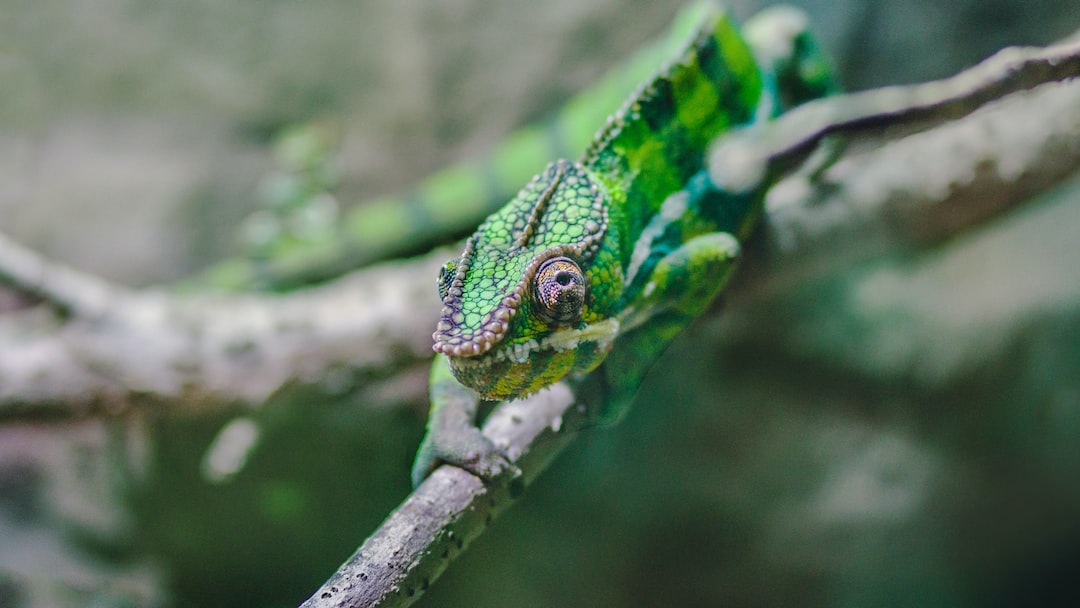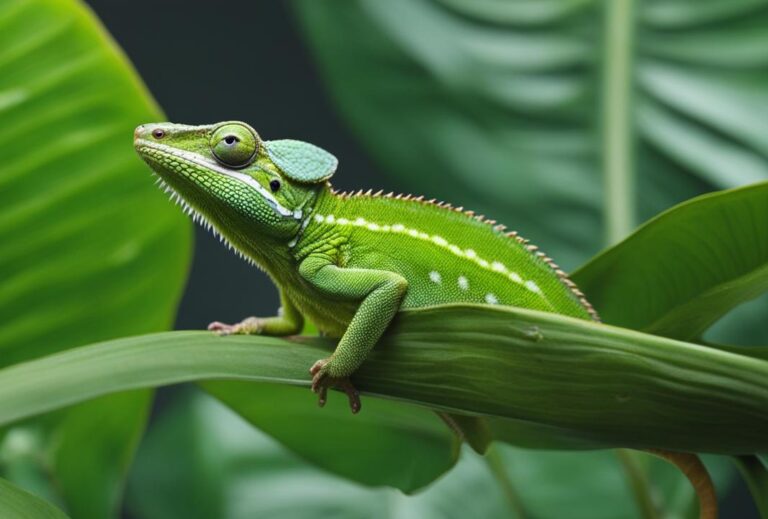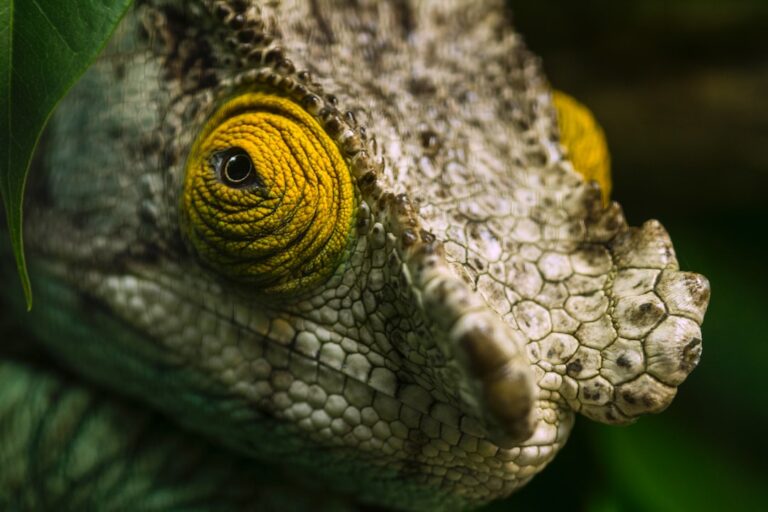Do Chameleons Yawn?
Chameleons are fascinating creatures known for their ability to change color and blend into their surroundings. They belong to the family Chamaeleonidae and are native to Africa, Madagascar, and parts of southern Europe, Asia, and the Middle East. Chameleons have unique physical characteristics that set them apart from other reptiles. They have long, slender bodies, prehensile tails, and independently moving eyes that can rotate 180 degrees. Their feet are adapted for climbing, with fused toes that form a grasping structure.
Table of Contents
Understanding the Yawning Behavior
Yawning is a common behavior observed in many animals, including humans. It is a reflexive action characterized by the opening of the mouth wide and taking in a deep breath. Yawning serves various purposes in animals, such as regulating body temperature, increasing oxygen intake, and signaling fatigue or boredom. In some cases, yawning can also be a social behavior used for communication.
Chameleon yawning behavior is similar to that of other animals. When a chameleon yawns, it opens its mouth wide and stretches its jaw muscles. This action allows the chameleon to take in more air and potentially regulate its body temperature. Chameleons may yawn when they wake up from sleep or when they are preparing to go to sleep. Yawning can also occur during periods of stress or excitement.
Do Chameleons Yawn?
Yes, chameleons do yawn. When a chameleon yawns, it is a noticeable behavior that can be observed by their owners or researchers studying them. The yawn of a chameleon is characterized by the opening of the mouth wide and the stretching of the jaw muscles. It is a slow and deliberate action that can last for several seconds.
Chameleon yawning behavior is similar to that of other animals, such as mammals and birds. However, there are some differences in the way chameleons yawn compared to other species. For example, chameleons do not make any vocalizations when they yawn, unlike some mammals that may produce a sound. Additionally, chameleons may yawn more frequently than other animals, possibly due to their unique physiological needs.
Purpose of Yawning in Chameleons
The exact purpose of yawning in chameleons is not fully understood, but there are several theories as to why they exhibit this behavior. One possible reason is that yawning helps chameleons regulate their body temperature. By taking in a deep breath, chameleons may be able to cool down or warm up their bodies depending on the environmental conditions.
Another theory is that yawning helps chameleons increase their oxygen intake. Chameleons have a high metabolic rate and require a constant supply of oxygen to support their active lifestyle. Yawning may allow them to take in more air and ensure that their oxygen needs are met.
Furthermore, yawning in chameleons may serve as a way to stretch their jaw muscles and maintain their oral health. Chameleons have specialized tongues that they use to catch prey, and yawning may help keep these muscles strong and flexible.
Yawning as a Sign of Stress in Chameleons
Stress can have a significant impact on the health and well-being of chameleons. When chameleons are exposed to stressful situations, such as changes in their environment or handling by humans, they may exhibit various behaviors to cope with the stress. One of these behaviors is yawning.
Yawning in chameleons can be a sign of stress or discomfort. It may indicate that the chameleon is feeling threatened or anxious. Yawning in response to stress is often accompanied by other behaviors, such as hissing, puffing up their bodies, or changing color. If a chameleon is yawning frequently or in combination with other stress-related behaviors, it is important to assess the cause of the stress and take steps to alleviate it.
Factors Affecting Yawning in Chameleons
Several factors can influence chameleon yawning behavior. One of the main factors is the environmental conditions. Chameleons are ectothermic animals, meaning their body temperature is regulated by their environment. Yawning may help chameleons adjust their body temperature by increasing or decreasing their oxygen intake.
Physiological factors can also affect chameleon yawning behavior. For example, chameleons may yawn more frequently when they are hungry or preparing to eat. Yawning may help them prepare their jaw muscles for the task of catching and consuming prey.
Additionally, stress and anxiety can play a role in chameleon yawning behavior. As mentioned earlier, yawning can be a sign of stress in chameleons. If a chameleon is kept in an environment that is not suitable for its needs or is exposed to frequent disturbances, it may yawn more often as a response to the stress.
Yawning in Different Species of Chameleons
Yawning behavior can vary among different species of chameleons. Some species may yawn more frequently than others, while some may exhibit different types of yawning behaviors. These differences may be related to habitat preferences or other factors specific to each species.
For example, species that inhabit cooler environments may yawn more often as a way to regulate their body temperature. On the other hand, species that live in warmer climates may yawn less frequently because they do not need to cool down as often.
Furthermore, differences in yawning behavior may also be related to social dynamics within each species. Some species of chameleons are more solitary and may yawn less frequently, while others are more social and may use yawning as a form of communication with other members of their species.
The Role of Yawning in Chameleon Communication
Yawning in chameleons may serve as a form of communication. Chameleons are known to use various visual displays to communicate with each other, and yawning may be one of these displays. Yawning can be a way for chameleons to signal their presence or intentions to other members of their species.
In some cases, yawning in chameleons may be a territorial display. By yawning, a chameleon may be asserting its dominance or defending its territory against intruders. Yawning can also be a way for chameleons to establish social hierarchies within their groups.
Furthermore, yawning in chameleons may also be a form of courtship behavior. During mating season, male chameleons may yawn to attract the attention of females or to signal their readiness to mate. Yawning can be a visual cue that indicates the male’s fitness and reproductive capabilities.
Observing and Interpreting Yawning in Chameleons
Observing and interpreting yawning behavior in chameleons can provide valuable insights into their health and well-being. When observing a chameleon, it is important to pay attention to the context in which the yawning occurs. If the chameleon is yawning frequently or in combination with other stress-related behaviors, it may indicate that the chameleon is experiencing stress or discomfort.
It is also important to consider the environmental and physiological factors that may influence yawning behavior. If a chameleon is yawning after waking up from sleep or before going to sleep, it is likely a normal behavior associated with their daily routine. However, if a chameleon is yawning at unusual times or in response to specific stimuli, it may be a sign of stress or illness.
Yawning and Chameleon Health
In conclusion, yawning is a common behavior observed in chameleons. It serves various purposes, including regulating body temperature, increasing oxygen intake, and potentially communicating with other members of their species. Yawning can also be a sign of stress or discomfort in chameleons.
Understanding and interpreting yawning behavior in chameleons can provide valuable insights into their health and well-being. By observing their yawning behavior and considering the context in which it occurs, owners and researchers can better understand the needs and behaviors of these fascinating creatures.
If you’re curious about the yawning habits of chameleons, you might also be interested in learning about their sensitivity to sound. Check out this fascinating article on reptilefriend.com to discover just how much noise affects these unique creatures.







